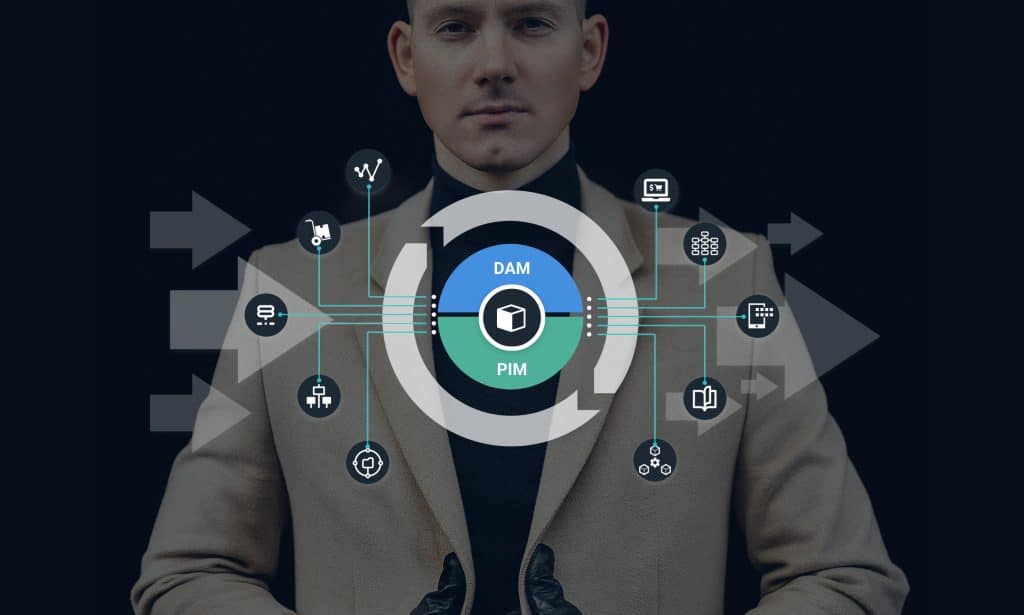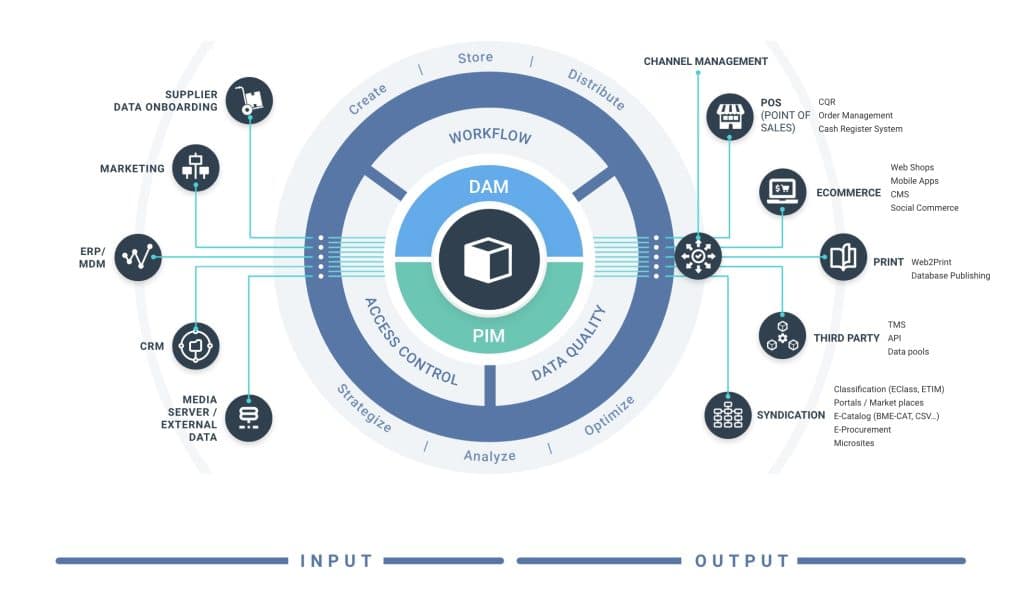Blog
Product Content Lifecycle –
from ERP to PCM to Channel Management

When it comes to their product information, many companies are wondering which strategy for managing, maintaining and providing is right for them. While some, especially smaller companies with a manageable product range, still rely primarily on Excel, others consider the pros and cons of different software solutions. When companies reach their limits with Excel or other spreadsheet tools and realize that their product data maintenance is not only inefficient but also very error-prone, they are suddenly confronted with a whole range of seemingly suitable options. Vendors of enterprise resource planning, digital asset management, master data management or product information systems compete for their attention and promise optimal data maintenance and delivery. But which system actually has which task?

Enterprise Ressource Planning (ERP)
ERP systems are often referred to as the heart of a company, since this is where all business-relevant master data is centrally managed. This includes financial as well as customer, product and location-related data. Basically, all data related to the transaction processes of a company is managed here. To name a few, product-related master data includes, information on stock levels, the warehouse location or the price of the products. As a result, departments such as logistics, procurement or finance are particularly reliant on this information.
Product Information Management (PIM)
PIM systems also have the task of managing product data centrally in one place. However, the main purpose is to support marketing- and sales-related processes. This means, that much more is needed than just the product-related master data. PIM systems maintain marketing texts and product descriptions as so called rich product content and additional product information like colors, materials or sizes. Essentially, PIM systems provide all the information needed for a perfect product presentation. This applies for any communication channel: the company website, the online shop, marketplaces, mobile applications or in social media. Ultimately, PIM systems manage channel-dependent representations and deliver them in a targeted manner using channel management.
In addition, many PIM systems also allow the management of product images. For many companies, however, it is advisable to use a dedicated digital asset management system that offers more possibilities for creative collaboration and process-optimized work around the creation, delivery and use of digital content such as images, videos, logos, presentations and graphics. In any case, it is crucial to ensure that PIM and DAM are tightly integrated as a result of which relevant product content can be combined and delivered contextually and in real time.
Digital Asset Management (DAM)
Especially for businesses with a broader product range, it makes sense to acquire a separate DAM system that manages all of the company’s digital content. This includes product images, video and audio content, logos, presentations, 3D image material or even graphics. However, modern DAM systems have long outgrown the pure management of this content and now offer numerous collaboration functions as well as integrations to creative programs such as Adobe InDesign or Photoshop and Microsoft Office applications for more efficient workflows.
What does all this mean for businesses?
Of course, the choice of which systems are suitable or not always depends on the individual framework conditions and the goals of a company. As soon as the product range becomes larger, more and more marketing and sales channels are added and new markets are entered, it is time to rethink the system architecture. In general, the responsible parties must be aware that all departments in the company have specific requirements for data and information and, depending on their characteristics, quality and availability, they can perform their work with greater efficiency.
This is why it is so difficult to find a comprehensive solution for every need – and the truth is the more complex the business world becomes, the more certain it is that such an attempt is doomed to failure. Best-of-breed has no alternative in today’s business environment, and that means focusing on individual use cases as well as cross-system workflows and interfaces. Only with this kind of strategy can a future-proof system architecture and organization be built.
Therefore, companies must continue to use their central ERP system to provide organization-wide quality-assured master data for downstream systems and processes. In addition, they need a modern PIM solution that enriches the product-related master data from the ERP system with further information, editorial content, and marketing- and sales-relevant elements in order to provide communications managers with the best possible support in presenting the product range in a way that is appropriate to each channel and context.
A dedicated DAM system, in turn, helps marketing create and manage visually appealing product content and use it effectively across all channels. In this process, DAM systems help streamline creative workflows and facilitate collaboration on and around digital content.
Product Content – The Golden Record
Product content is the core of mediacockpit, given the numerous tasks and expectations that marketing and sales managers face on a daily basis. Our goal is to provide support with mediacockpit’s functionality. The daily challenge for marketers is to communicate their offer and value proposition to potential customers in an understandable way. To succeed, two things are needed: Information and visualization. If you’re looking for a new winter coat online, the first thing you need to make a decision is very basic information such as size and price. Other product data such as the material or the country of origin may be relevant for the buyers decision. But even if all the data is listed neatly and clearly, online shoppers need an appropriate visualization of the coat before they make a decision – whether product images, color illustrations or even videos: It is important that the expectation of a product is as close to reality as possible. This not only helps convert prospects to buyers, but also reduces the likelihood of returns. In addition to visualizations and pure product information, editorial content such as marketing texts can also contribute to being found easier, ultimately leading to a sale.
Great product content and optimized processes for its creation, preparation, and distribution not only help to increase sales, but also reduce costs and internal efforts. It is therefore extremely important for companies to put the entire product content lifecycle to the test.
Highlighted Whitepaper
Manifest: One-Stop Product Content Experience
Met One-stop Product Content Experience helpen we onze klanten om hun individuele toekomst in de markt op een duurzame en veilige manier vorm te geven.
Accomplish more together
We believe in the value of collaboration and exchange. This applies both to our customer projects, from which we generate many valuable insights for our product development, and to our growing partner network, with an extensive range of which we support our customers in their digitization.



